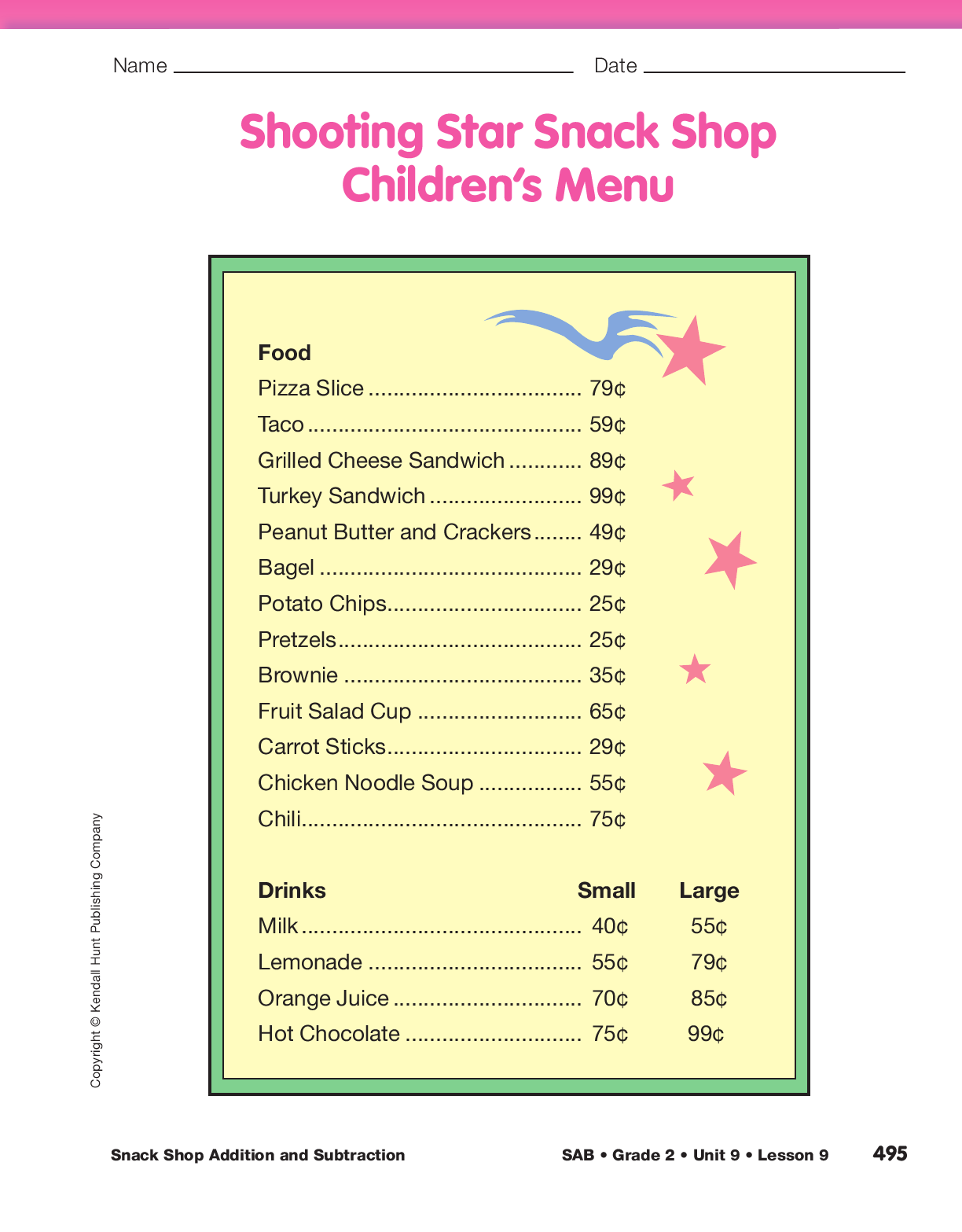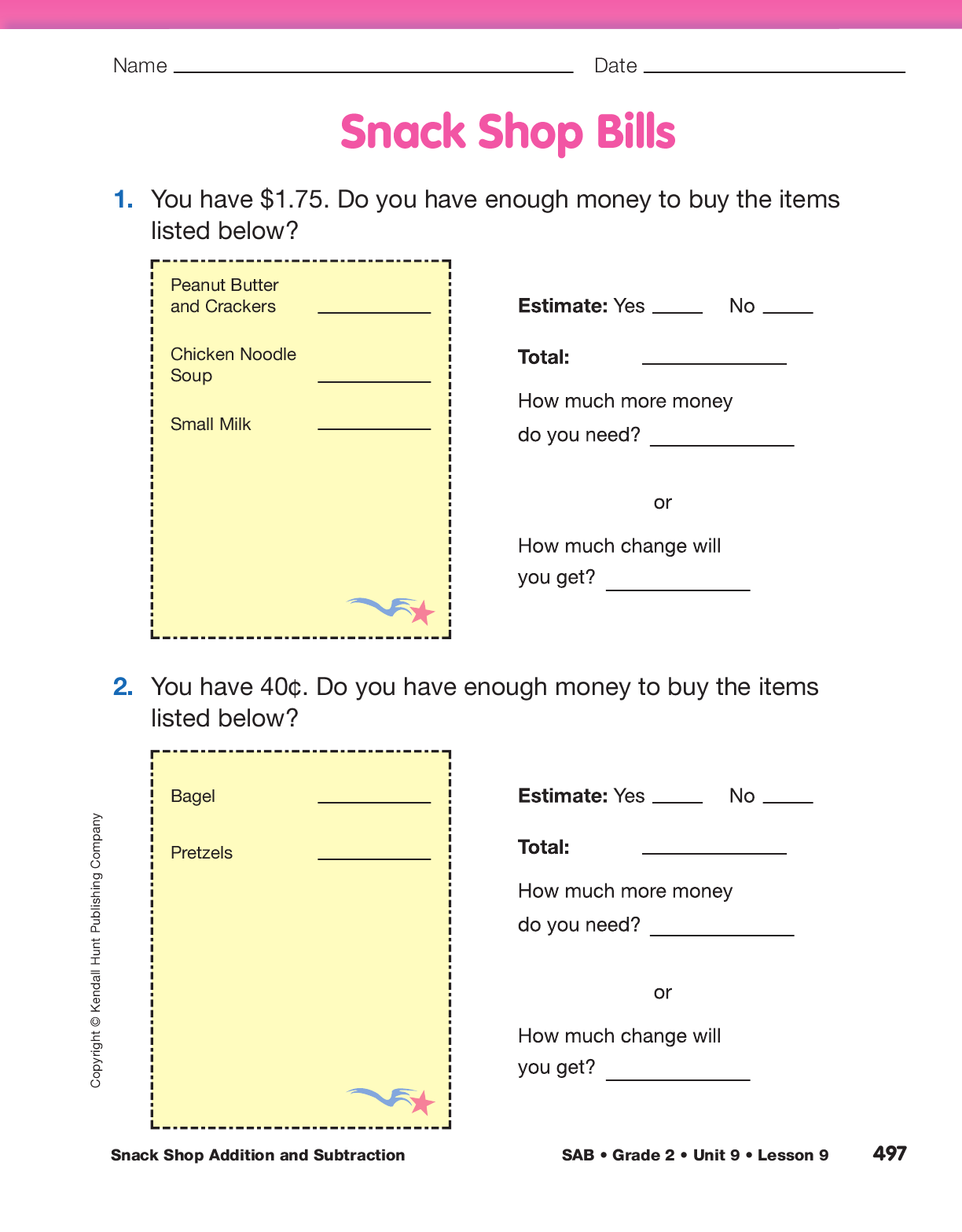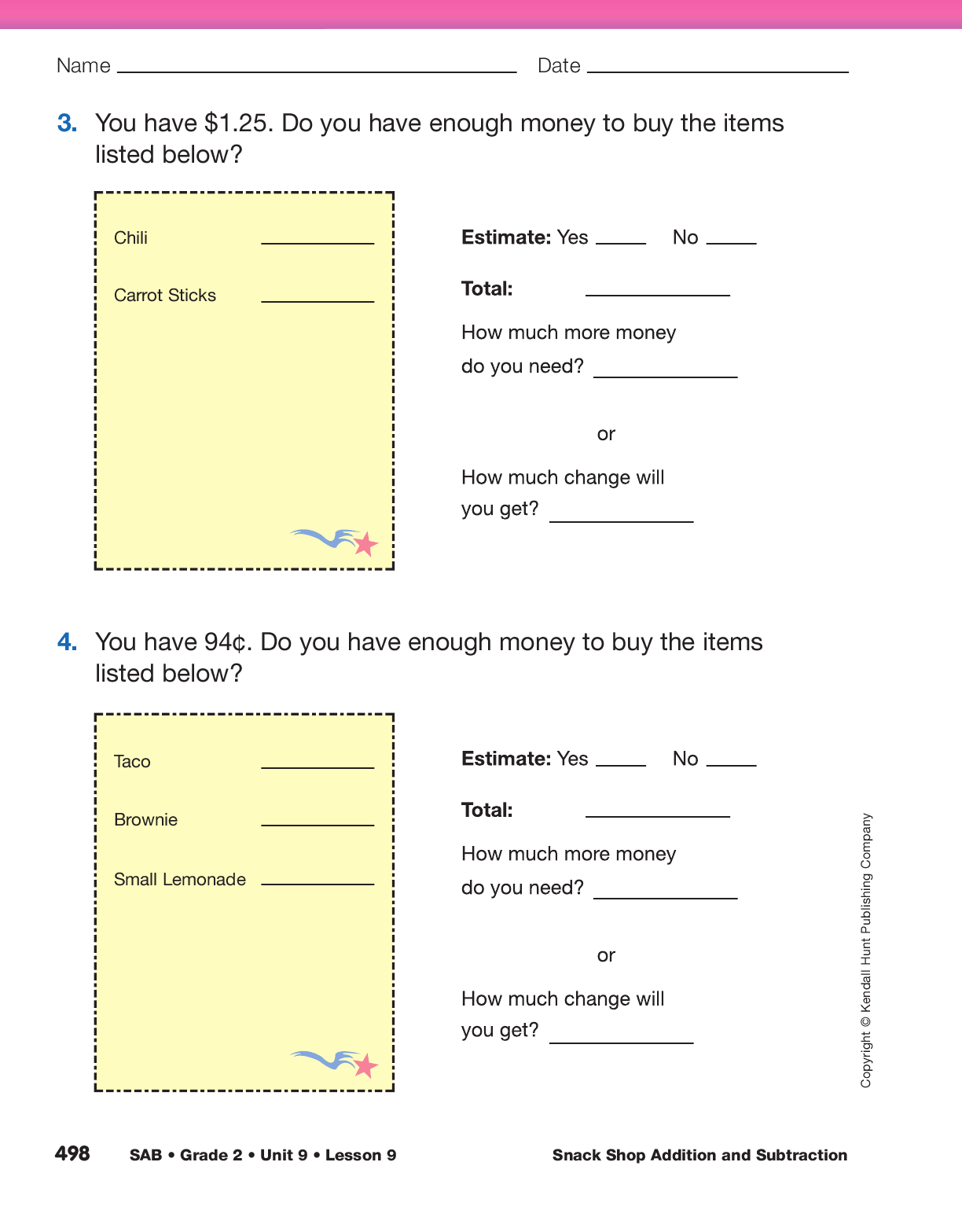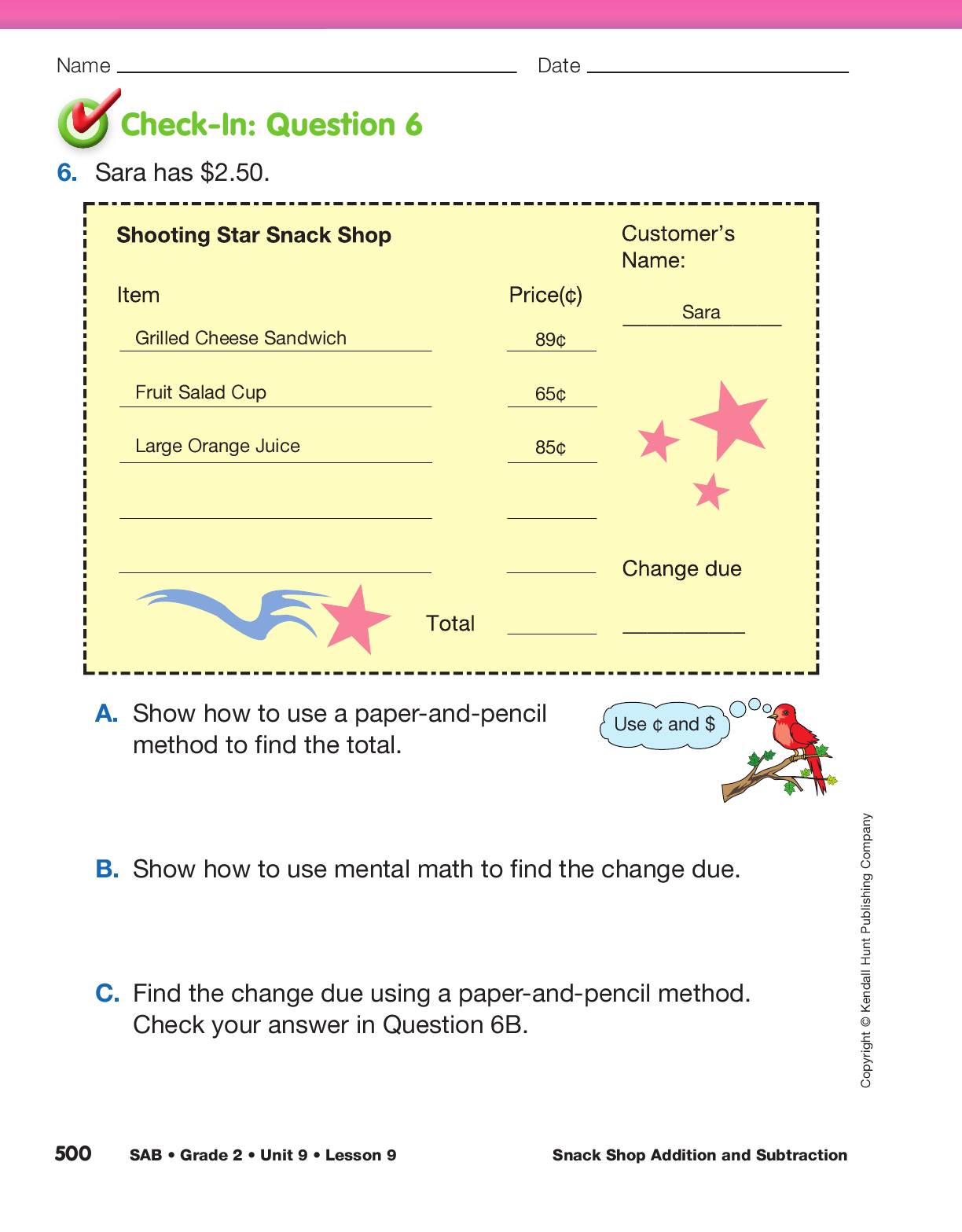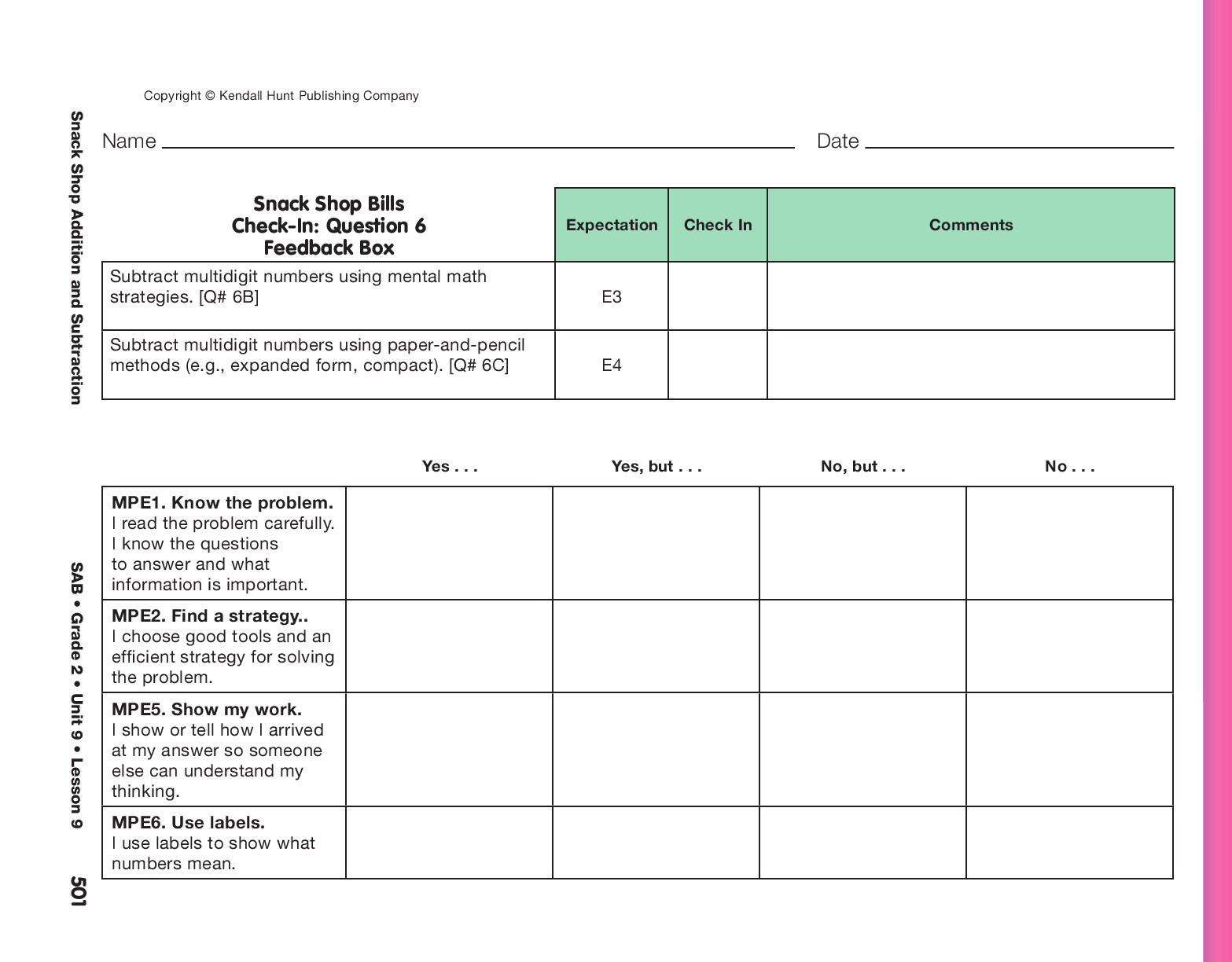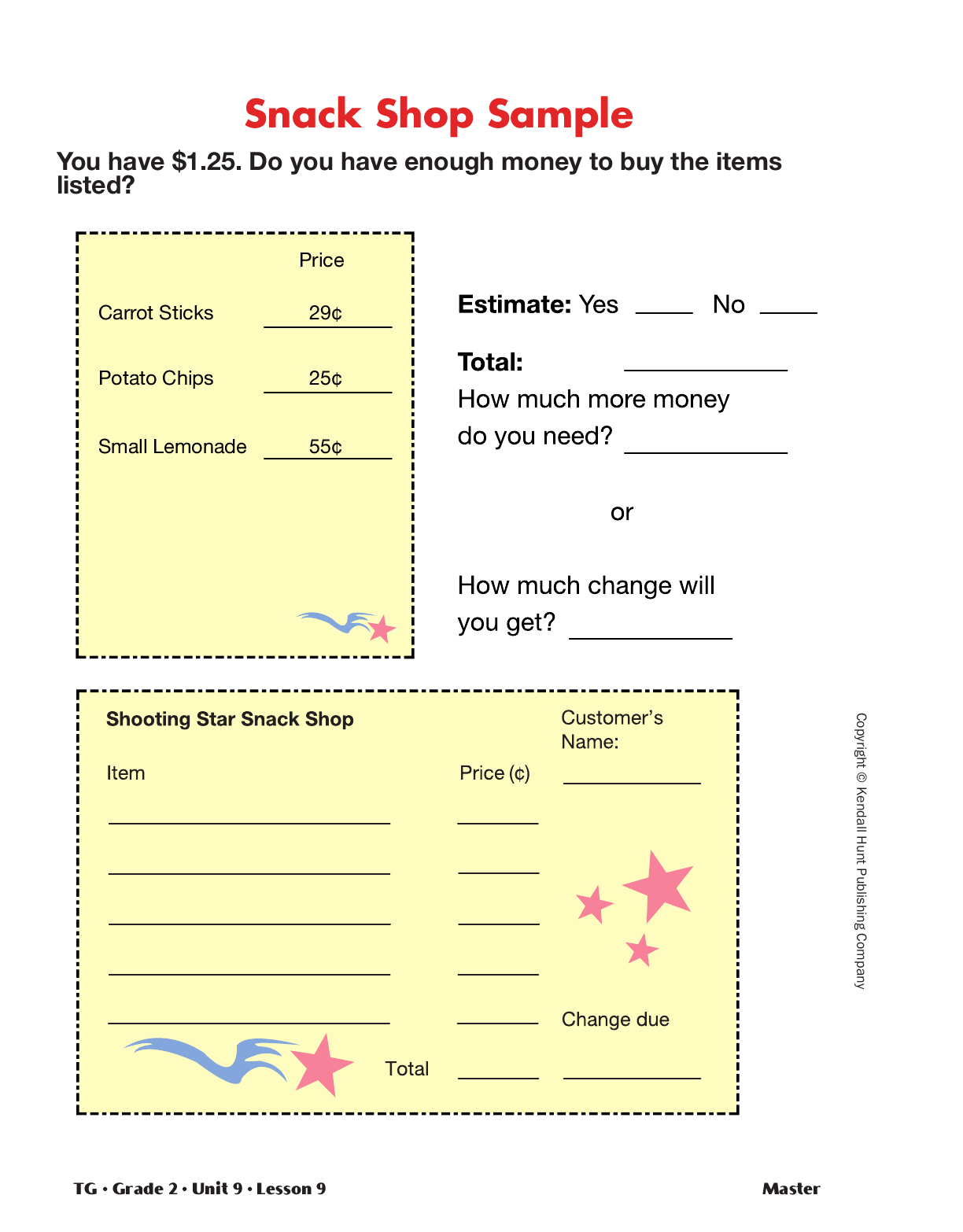Snack Shop Addition and Subtraction
Est. Class Sessions: 1–2Developing the Lesson
Review Subtraction Strategies. Display and direct students’ attention to the Subtraction Strategies Chart from Lesson 2 and the Subtraction Strategies Menu from the Student Activity Book Reference section. Write the following three problems on the board:
| $1.75 | 98¢ | $1.51 |
| − $1.25 | − 59¢ | − .30 |
Ask:
Have students explain their thinking and demonstrate how they would solve one of the problems a particular way. Students may respond that they can solve $1.75 − $1.25 in their heads because they think about quarters and because no trades need to be made. Because there are trades to be made, some students may prefer to use base-ten pieces or paper-and-pencil strategies to solve 98¢ − 59¢. Some students might use a compensation strategy: 100¢ − 59¢ = 41¢, 41¢ − 2¢ = 39¢. For $1.51 − $.30, a student could start at 151 on the 200 Chart and move back three rows to subtract 30 or mentally subtract three tens from 151. Other students might start at 151 and take three hops of ten backwards on the number line.
Solve Addition and Subtraction Problems. Display and direct students to the Shooting Star Snack Shop Children’s Menu page in the Student Activity Book. Asking students to buy only one item and calculate the change allows them to practice some of the strategies they learned in this unit. Encourage students to share their strategies. Begin by posing the following situations to the students.
Ask:
Next display the Snack Shop Sample Master. Read the problem on the top half of the Master and solve it as a class. This problem requires students to find the total cost of three items. First they must estimate the total.
Ask:
Have students explain their thinking and demonstrate how they would solve the problem. Discuss more than one method. Some may use mental math, while others choose to use tools such as the 200 Chart, number line, or base-ten pieces. Still other students may use paper and pencil.
Ask:
Finally, direct students’ attention to the form on the bottom half of the Snack Shop Sample Master.
Ask:
Have students work on the problem with a partner, finding the total cost and the amount of change due for their order. Then, as a class, design one order to list on the form on the Snack Shop Sample Master. Work through the problem together using the following steps:
- Choose the items from the menu.
- Estimate whether there is enough money.
- Calculate the total.
- Find the amount of change due.
Encourage students to share their strategies for solving addition problems with more than two addends. Have students also share their subtraction strategies. Remind them to include dollar or cent signs in their answers. Demonstrate how to use a calculator to check the calculations.
Assign the problems on the Snack Shop Bills pages in the Student Activity Book. Encourage students to refer to the Addition Strategies Menu and the Subtraction Strategies Menu in the Student Activity Book Reference section and the Subtraction Strategies Chart from Lesson 2. Provide access to the tools they have used in class.
Share Solution Strategies. Upon completion, provide an opportunity for students to share their solutions for Question 5 on the Snack Shop Bills pages. Talk about estimation, addition, and subtraction strategies. Try to choose volunteers who can share a variety of strategies including some paper-and-pencil and mental math strategies. Use calculators to check students’ subtraction with addition.
Questions to ask include:














